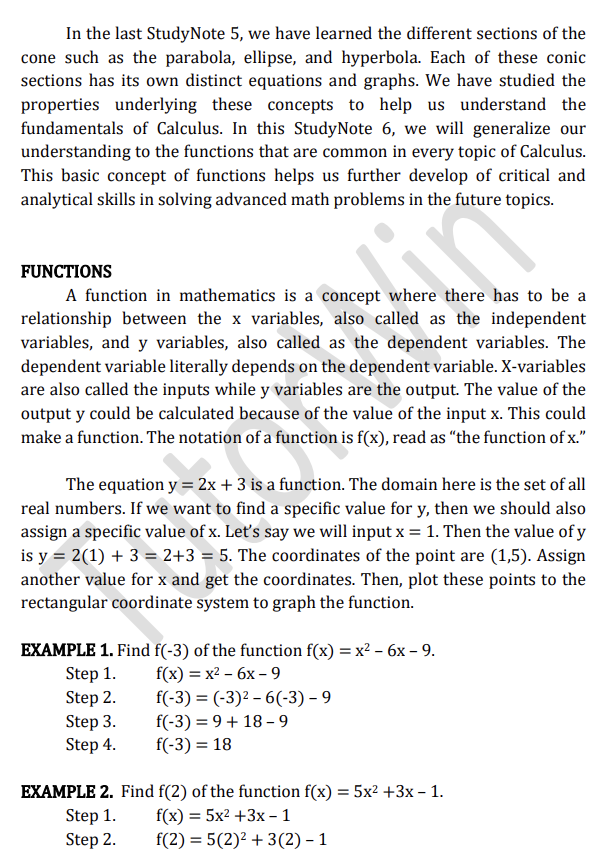Functions in Differential Calculus
Summary:
This document, titled “Differential Calculus – Study Notes 6: Functions”, prepared by Tutor Win, discusses the concept of functions in calculus. It builds on the understanding of conic sections and the properties that underlie them. Functions, which describe relationships between independent (x) and dependent (y) variables, are fundamental in calculus. These relationships can be represented with the notation f(x).
Examples are provided that demonstrate the concepts and properties of functions:
The function y = 2x + 3 is shown with an example calculation for x = 1.
Evaluating functions at specific values, such as f(-3) for f(x) = x^2 – 6x – 9.
Finding domains of functions, such as y = √5 − 𝑥^2, where the domain is determined by ensuring the function is defined.
It also goes on to explain graphing functions, illustrating the process with examples of graphing linear and quadratic functions. Graphs can be constructed by assigning x-values, calculating the corresponding y-values, and plotting these points on a rectangular coordinate system.
The document concludes with a practice test, which includes exercises on finding specific function values, determining domains of functions, and graphing functions. Solutions are provided for some of the practice test problems.
Excerpt:
Functions in Differential Calculus
In the last StudyNote 5, we learned the different sections of the cone, such as the parabola, ellipse, and hyperbola. Each of these conic sections has its own distinct equations and graphs. We have studied the properties underlying these concepts to help us understand the fundamentals of Calculus. In this StudyNote 6, we will generalize our understanding to the functions that are common in every topic of Calculus. This basic concept of functions helps us further develop of critical and analytical skills in solving advanced math problems in future topics.
FUNCTIONS
A function in mathematics is a concept where there has to be a relationship between the x variables, also called the independent variables, and the y variables, also called the dependent variables. The dependent variable depends on the dependent variable. X-variables are also called the inputs, while y-variables are the output.


Reviews